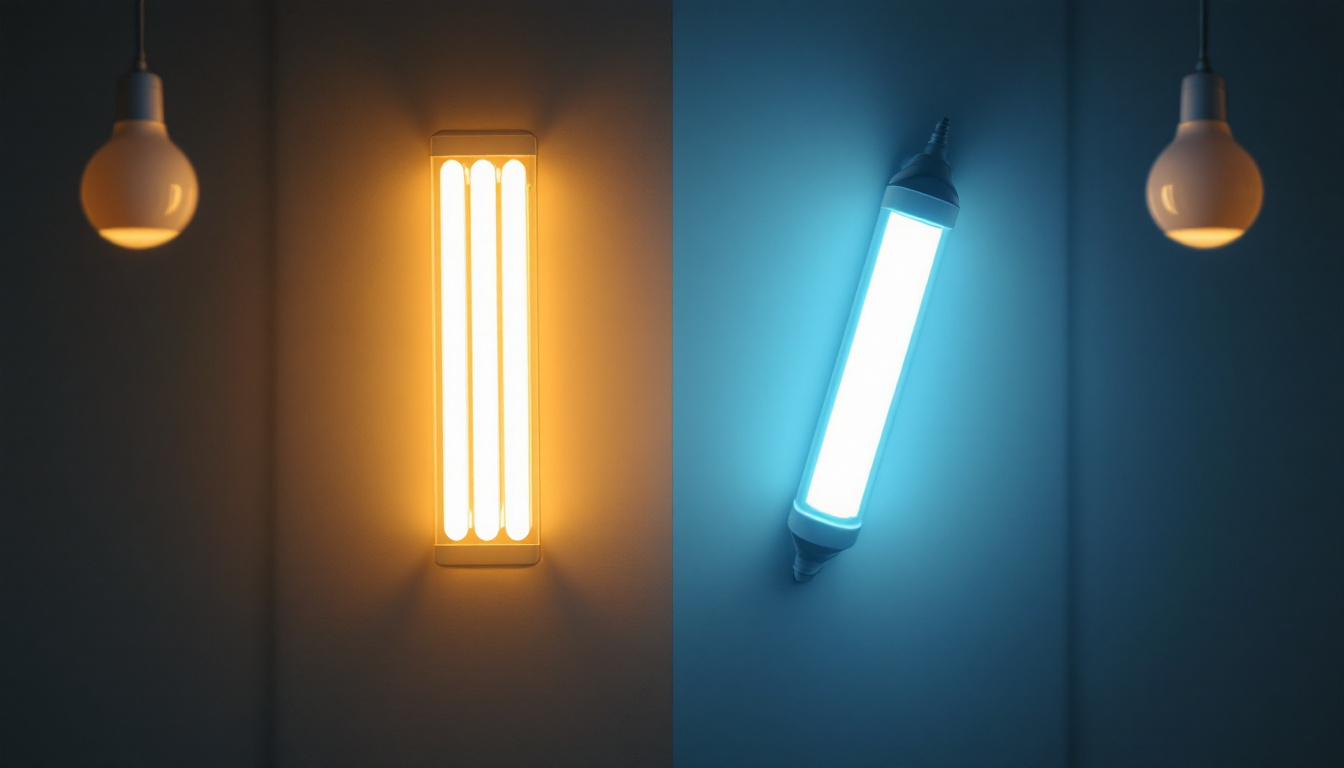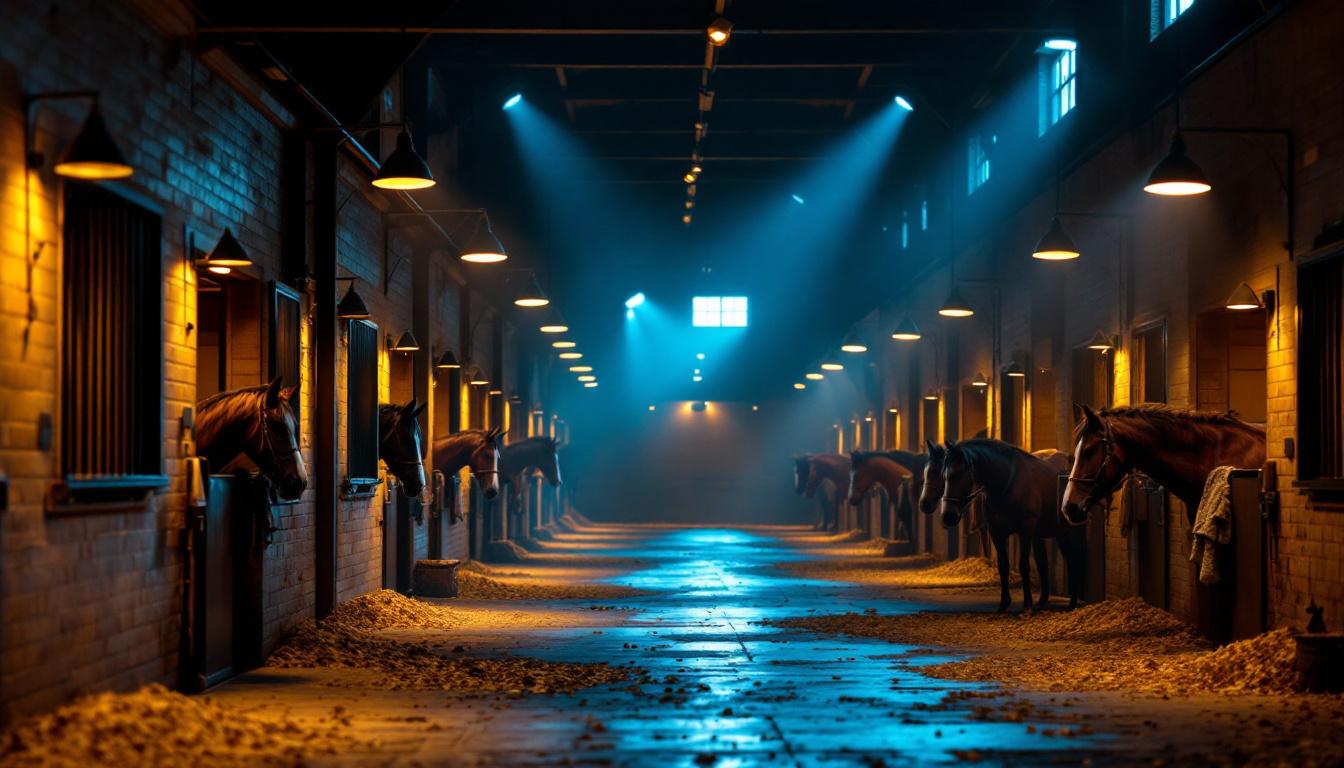
The lighting industry has undergone a remarkable transformation over the years, with advancements in technology leading to the emergence of various lighting solutions. Among these, LED and fluorescent lighting have become two of the most prominent options available. Understanding the differences, benefits, and applications of these two types of lighting is essential for lighting contractors aiming to provide the best solutions to their clients.
Fluorescent lighting has been a staple in both residential and commercial settings for decades. This technology operates by passing an electric current through a gas-filled tube, which produces ultraviolet light. This light then excites a phosphor coating on the inside of the tube, emitting visible light. While fluorescent lights have been widely used, they come with their own set of advantages and disadvantages.
One of the primary benefits of fluorescent lighting is its energy efficiency compared to traditional incandescent bulbs. Fluorescent lights use significantly less energy to produce the same amount of light, making them a cost-effective option for large spaces. Additionally, they have a longer lifespan than incandescent bulbs, reducing the frequency of replacements.
Fluorescent lights are also available in a variety of color temperatures, allowing for flexibility in design and ambiance. This adaptability makes them suitable for various applications, from office spaces to retail environments, where lighting plays a crucial role in creating the desired atmosphere.
Despite their advantages, fluorescent lights have some notable drawbacks. One of the most significant concerns is the presence of mercury, a hazardous material found in fluorescent tubes. This necessitates careful disposal and recycling to prevent environmental contamination. Additionally, fluorescent lights can flicker and take time to warm up, which may not be ideal for all settings.
Moreover, the quality of light produced by fluorescent bulbs can be perceived as harsh, leading to eye strain in some individuals. This has prompted many contractors to seek alternative lighting solutions that offer better quality and comfort.
Light Emitting Diodes (LEDs) have revolutionized the lighting industry in recent years. Unlike fluorescent lights, LEDs produce light through a semiconductor that emits photons when an electric current passes through it. This technology has gained popularity for its numerous benefits, making it a preferred choice for many lighting contractors.
One of the most significant advantages of LED lighting is its exceptional energy efficiency. LEDs consume a fraction of the energy required by both incandescent and fluorescent lights to produce the same amount of light. This efficiency translates into lower electricity bills and a reduced carbon footprint, appealing to environmentally conscious clients.
LEDs also boast an impressive lifespan, often lasting up to 25 times longer than incandescent bulbs and significantly longer than fluorescent lights. This longevity reduces maintenance costs and the frequency of replacements, making them a practical choice for both residential and commercial applications.
Another compelling aspect of LED lighting is the quality of light it produces. LEDs offer a more natural and consistent light output, with options available in various color temperatures. This flexibility allows lighting contractors to create tailored lighting solutions that enhance the aesthetics of a space while ensuring comfort for occupants.
Furthermore, LEDs are dimmable and can be integrated into smart lighting systems, providing users with greater control over their lighting environments. This adaptability is particularly beneficial in commercial settings, where different tasks may require varying levels of illumination.
When evaluating LED and fluorescent lighting, it is essential to consider several key factors, including energy efficiency, lifespan, initial cost, and environmental impact. Each of these factors plays a crucial role in determining the best lighting solution for a specific application.
In terms of energy efficiency, LEDs outperform fluorescent lights significantly. While fluorescent bulbs are more efficient than traditional incandescent bulbs, LEDs take energy efficiency to the next level. This efficiency not only reduces energy consumption but also results in lower operating costs over time.
However, the initial cost of LED fixtures can be higher than fluorescent options. This upfront investment may deter some clients, but it is crucial to emphasize the long-term savings associated with lower energy bills and reduced maintenance costs. Over time, the total cost of ownership for LEDs becomes more favorable than that of fluorescent lights.
The lifespan of LED lighting is another critical advantage. While fluorescent lights typically last around 10,000 hours, LEDs can last anywhere from 25,000 to 50,000 hours or more. This extended lifespan means fewer replacements, which is particularly beneficial in commercial settings where maintenance can be disruptive and costly.
Moreover, the durability of LEDs makes them less prone to breakage. Unlike fluorescent tubes, which can shatter easily, LEDs are solid-state devices that can withstand more rigorous handling and environmental conditions. This resilience further enhances their appeal for contractors working in various settings.
As sustainability becomes an increasingly important consideration in the lighting industry, the environmental impact of lighting solutions is a significant factor for contractors and clients alike. Both LED and fluorescent lighting have their environmental implications, but they differ in critical ways.
Fluorescent lights contain mercury, a toxic substance that poses environmental risks if not disposed of properly. This requirement for careful handling and recycling can complicate the use of fluorescent lighting, particularly in large-scale applications. In contrast, LEDs do not contain hazardous materials, making them a more environmentally friendly option.
The reduced energy consumption of LEDs also contributes to their lower carbon footprint. By using less energy, LEDs help decrease the demand for electricity generated from fossil fuels, further promoting sustainability in the lighting industry.
While LED technology is more environmentally friendly, it is essential to consider the end-of-life disposal of both types of lighting. Fluorescent bulbs must be recycled through specialized programs to prevent mercury contamination, while LEDs can often be disposed of in standard waste streams, although recycling programs are becoming more common for electronic waste.
Lighting contractors should educate their clients on the importance of responsible disposal and recycling practices for both types of lighting. By promoting sustainable practices, contractors can help clients make informed decisions that align with their environmental values.
Understanding the specific applications of LED and fluorescent lighting can help contractors make informed recommendations to their clients. Each type of lighting has unique advantages that make it suitable for different environments and purposes.
Fluorescent lighting has long been a go-to choice for commercial and industrial settings, particularly in offices, warehouses, and retail spaces. Its ability to provide bright, even illumination makes it suitable for environments where visibility is crucial. However, the rise of LEDs has led to a shift in preference, as many businesses seek energy-efficient solutions that reduce operating costs.
LEDs are increasingly being used in commercial applications, particularly in areas such as retail, hospitality, and office spaces. Their versatility allows for creative lighting designs that enhance the customer experience while maintaining energy efficiency. Additionally, the ability to integrate LEDs into smart lighting systems is a significant advantage for modern commercial spaces.
In residential settings, both LED and fluorescent lighting have their place. Fluorescent lights are often used in kitchens, garages, and utility rooms where bright, functional lighting is needed. However, LEDs are becoming the preferred choice for homeowners seeking energy-efficient options that provide quality light and aesthetic appeal.
With the growing popularity of smart home technology, LED lighting systems can be easily integrated into home automation setups, allowing homeowners to control their lighting through mobile apps or voice commands. This level of convenience and customization is a significant selling point for contractors working in the residential market.
The lighting industry continues to evolve, with ongoing advancements in technology and design. As lighting contractors navigate this dynamic landscape, staying informed about emerging trends and innovations is essential for success.
One of the most significant trends shaping the future of lighting is the rise of smart lighting solutions. These systems allow users to control their lighting remotely, adjust brightness levels, and even change color temperatures to suit their needs. The integration of smart technology into LED lighting systems is particularly appealing to both residential and commercial clients.
Lighting contractors should familiarize themselves with smart lighting products and their installation requirements. Offering clients smart lighting solutions can enhance their overall experience and set contractors apart in a competitive market.
Another emerging trend is the focus on human-centric lighting, which aims to create lighting environments that support health and well-being. This approach considers factors such as circadian rhythms and the psychological effects of light on individuals. LEDs, with their versatility and ability to mimic natural light, are well-suited for human-centric applications.
Contractors can play a vital role in educating clients about the benefits of human-centric lighting and how it can enhance productivity, comfort, and overall quality of life. By staying ahead of these trends, contractors can position themselves as leaders in the lighting industry.
The evolution of lighting technology has brought about significant changes in the industry, with LED and fluorescent lighting emerging as two prominent options. While fluorescent lights have served their purpose for many years, the advantages of LED technology—such as energy efficiency, longevity, and quality of light—make it a compelling choice for modern applications.
Lighting contractors must stay informed about the latest trends and innovations in the industry to provide clients with the best solutions. By understanding the strengths and weaknesses of both LED and fluorescent lighting, contractors can make informed recommendations that align with their clients’ needs and preferences. As the lighting industry continues to evolve, embracing new technologies and sustainable practices will be key to success in this dynamic field.
Ready to elevate your lighting solutions with the efficiency and quality of LED technology? At LumenWholesale, we specialize in providing lighting contractors with the finest, spec-grade LED products at unbeatable wholesale prices. Say goodbye to local distributor markups and hello to our extensive selection that meets the highest industry standards. Plus, with free shipping on bulk orders, you can ensure your projects shine brighter without any hidden fees. Don’t compromise on quality or value—choose LumenWholesale for Wholesale Lighting at the Best Value and experience the perfect blend of affordability and convenience.

Discover the often-overlooked aspects of light fan installations that even seasoned lighting contractors miss.

Discover essential horse barn lighting ideas every contractor should know to enhance safety, efficiency, and comfort.

Discover the top strategies lighting contractors use to enhance outdoor spaces with ceiling lights.

Discover expert strategies for lighting contractors to tackle the challenges of replacing recessed lighting with LED options.